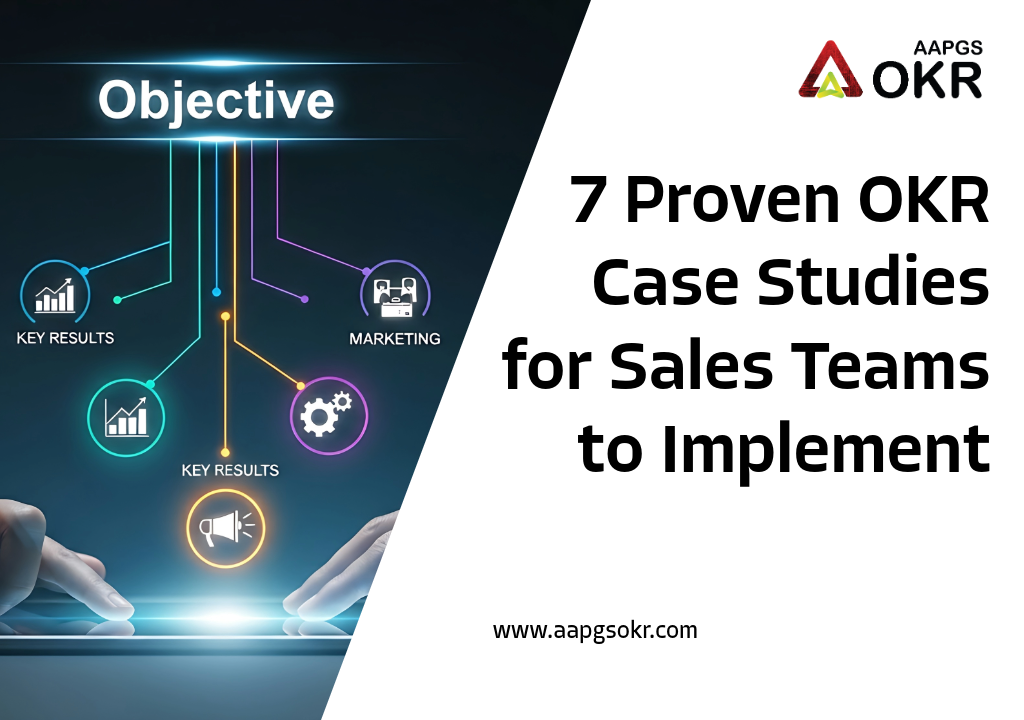Getting Started :
For sales teams, success depends on setting goals that are specific, trackable, and tied directly to business growth. Objectives and Key Results offer a powerful framework to transform ambitious sales targets into concrete achievements. In this article, we showcase seven real-world case studies where sales teams leveraged OKRs to enhance productivity, strengthen collaboration, and accelerate revenue growth. Each case provides actionable insights and measurable outcomes, giving your team practical examples to adopt and adapt for immediate impact.
Background :
The firm is a mid-sized SaaS company that provides workflow automation and analytics solutions tailored for small and medium businesses. Its platform enables organizations to enhance efficiency, track key metrics, and integrate effortlessly with tools like Slack, Salesforce, and HubSpot. With a workforce of 250 employees, including a 30-person sales team, the company operates across North America and APAC, supporting industries such as retail, logistics, and consulting. Although it has achieved $18M in annual recurring revenue, growth has slowed in recent quarters, highlighting the need for a more systematic sales approach and stronger lead-to-customer conversions.
The Challenge :
A mid-sized SaaS company was struggling with low lead-to-customer conversion rates.
- The sales team generated plenty of leads through marketing campaigns, but only 12% converted into paying customers.
- Sales reps lacked a structured follow-up process, and many leads went cold after the first demo.
- Leadership noticed that while the team was busy, their efforts weren’t translating into revenue growth.
Solution Statement :
The company adopted the AAPGS OKR framework to drive sales performance improvement by replacing vague goals with measurable objectives and key results. Through structured sales team OKRs, the approach enhanced quality engagement, disciplined follow-ups, and pipeline visibility. This practical example adds to OKR case studies, showcasing effective OKR implementation in sales and serving as one of the real-world OKR success stories that highlight clarity and accountability in execution.
Implementation Steps :
- Skill Development: Organized interactive sessions on consultative selling techniques and tailored customer outreach.
- CRM Integration: Embedded AAPGS OKR tracking within the CRM system to continuously measure and track progress.
- Alignment & Accountability: Held weekly review meetings to keep sales representatives consistently aligned with defined OKRs.
- Continuous Improvement: Sales leaders analyzed lost opportunities to fine-tune messaging, improve scripts, and strengthen follow-up practices.
The Results :
- Conversion rate jumped to 27%, surpassing the target.
- Follow-up compliance hit 95%, ensuring no lead was ignored.
- Sales cycle shortened to 22 days, improving cash flow.
- The team reported higher confidence and clarity in their daily tasks.
Conclusion :
The proof is undeniable OKRs elevate sales performance by connecting strategic vision with day-to-day execution. Across multiple case studies, the use of well-defined objectives and quantifiable results has consistently boosted efficiency, strengthened customer interactions, and accelerated revenue growth. For modern sales leaders, adopting OKRs is no longer a choice but a necessity for driving sustainable success.

